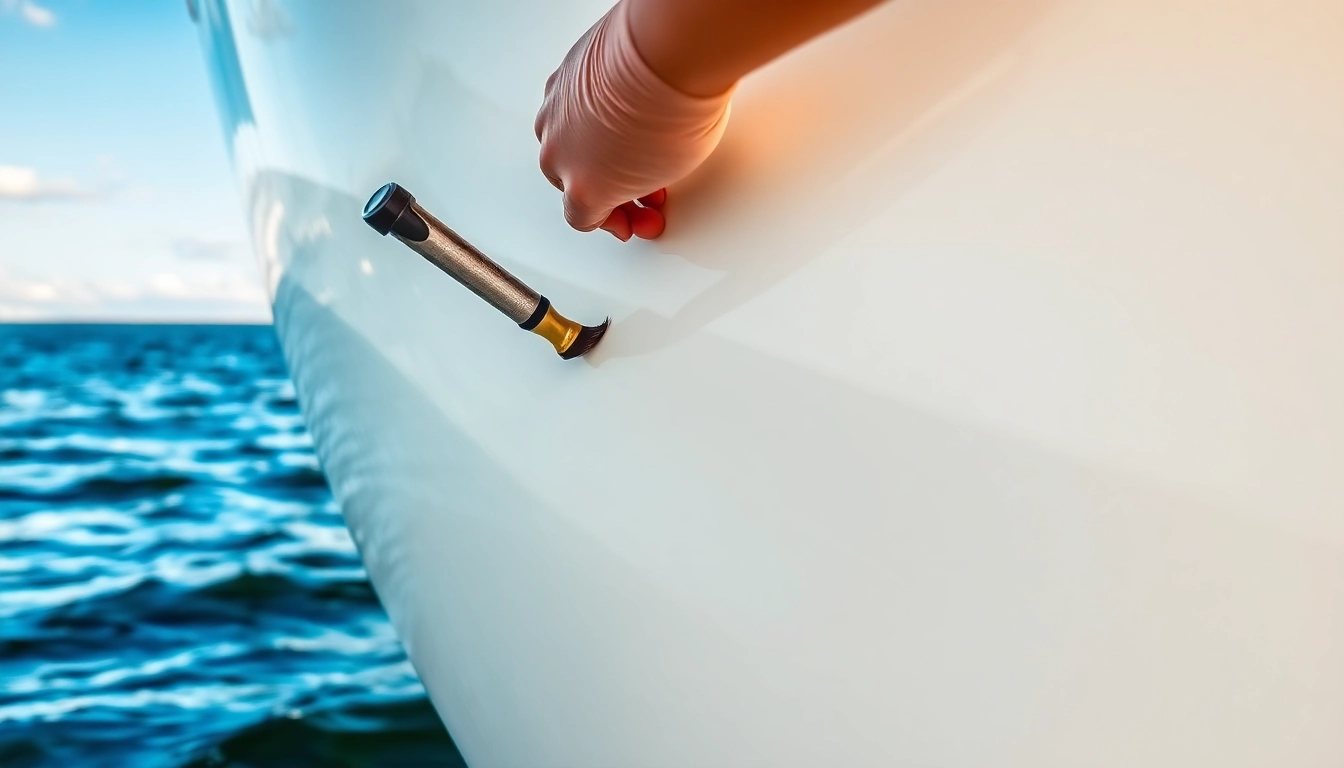Introduction: The Essential Role of Boots Sealants and Protective Coatings
When it comes to maintaining the pristine condition and longevity of watercraft, one of the most critical aspects is ensuring that the gelcoat and painted surfaces are well-protected from environmental damage. The application of high-quality Boots Versiegelung provides an effective barrier against UV radiation, saltwater, harsh chemicals, and physical abrasion. Whether you own a yacht, motorboat, or a sailboat, choosing the right sealant and understanding the intricacies of application can significantly extend the life and appearance of your vessel. This article explores the importance of boots sealing, key product features, application techniques, and the latest trends shaping the future of boat protective coatings.
What Is Boots Versiegelung? Definition and Significance
Boots Versiegelung, or boat sealant, refers to a specialized protective coating designed to form a durable, transparent, and adhesive layer over the surface of a boat. Its primary function is to shield the underlying gelcoat or paint from environmental stressors, including UV rays, salt deposits, pollutants, and mechanical impacts. An effective sealant maintains the boat’s gloss and prevents oxidation and discoloration, ultimately preserving the vessel’s resale value and ensuring safety.
In the quest for optimal boat care, the application of a high-quality boots sealant is indispensable. It acts as a barrier that simplifies cleaning routines, minimizes maintenance efforts, and enhances aesthetic appeal. For detailed guidance, you can explore more about Boots Versiegelung options tailored for different watercraft types.
Advantages of Using Boots Sealant for Watercraft
- Protection Against UV Damage: Prolonged sun exposure causes gelcoat oxidation and fading. Sealants contain UV inhibitors that safeguard against this deterioration.
- Enhanced Hydrophobicity: Modern sealants create water-repellent surfaces that prevent salt and dirt adhesion, easing cleaning processes.
- Chemical Resistance: Protects surfaces from pollutants, gasoline spills, and cleaning agents that could otherwise cause staining or corrosion.
- Improved Aesthetic Appeal: Maintains a glossy, fresh appearance that impresses owners and guests alike.
- Long-Term Cost Savings: Regular application reduces the frequency of costly repairs, polishing, and refinishing.
Case studies reveal that vessels treated with top-tier polymer or ceramic-based sealants exhibit superior resistance to environmental factors over traditional wax coatings, extending their effective lifespan by up to 50%.
Common Misconceptions and Facts about Boots Sealant
Many boat owners harbor misconceptions that can compromise the effectiveness of their protective measures:
- Myth: Sealants are only for new boats.
Fact: Properly selected sealants can rejuvenate older gelcoat surfaces and restore lost gloss. - Myth: Waxing is sufficient protection.
Fact: Wax provides a short-term shine but lacks long-lasting durability compared to modern polymer or ceramic coatings. - Myth: Sealants are difficult to apply.
Fact: With the right tools and step-by-step procedures, application is straightforward and quick.
Understanding these truths helps in making informed decisions and avoiding costly mistakes such as inadequate coverage or improper surface preparation.
Criteria for Selecting the Best Boots Versiegelung: What to Look For
Choosing the ideal sealant involves evaluating several key factors, tailored to your boat’s specific needs:
1. Material Compatibility
Ensure the product is suitable for your boat’s gelcoat, paint type, or fiberglass surface. Some coatings work better with certain materials, providing optimal adhesion and protection.
2. Longevity and Durability
Look for products with proven durability, often indicated by extended self-cleaning and UV protection properties. Ceramic-based coatings typically offer superior longevity, lasting several years with proper application.
3. Ease of Application
User-friendly products with clear instructions, applicator pads, and manageable curing times facilitate a professional finish even for DIY enthusiasts.
4. Environmental Resistance
Assess whether the sealant provides resistance to saltwater, pollutants, and biological fouling—crucial for boats operating in marine environments.
5. Cost-Effectiveness
Balance quality with affordability. Sometimes investing in a premium ceramic coating reduces the need for frequent reapplications, offsetting higher initial costs.
Comparative tests and industry reviews consistently highlight products like the MARINE SEALANT MS-3000/60 V2 as top performers, offering excellent protection and ease of use.
Types of Boots Sealants: Which One Is Right for You?
Understanding the differences among polymer, ceramic, and wax coatings helps in selecting the best solution for your application:
Polymer Sealants
Provide a durable, glossy finish with excellent UV and chemical resistance. They are suitable for owners seeking a balance between ease of application and long-lasting protection.
Ceramic Coatings
Utilize nanotechnology to form an ultra-hard, hydrophobic surface. Although more complex to apply, they offer superior longevity (up to several years) and exceptional surface hardness.
Waxes
Traditional waxes are easy to apply and cost-effective but require frequent reapplication (every few months). Ideal for aesthetic enhancement rather than maximum protection.
For higher-end applications and long-term benefits, ceramic and advanced polymer sealants are increasingly preferred by professional marinas and serious boat owners.
Application Techniques: Achieving a Flawless Finish
Proper preparation and application are critical to maximize the performance of your boots sealant:
Surface Preparation
Clean the boat thoroughly using a specialized cleaner such as BCC Power Cleaner 1L to remove dirt, salt, and old wax residues. Sanding or light polishing might be necessary for heavily oxidized surfaces to ensure adhesion.
Application Steps
- Ensure the surface is completely dry and free from contaminants.
- Apply the sealant using a foam applicator or microfiber cloth, following manufacturer instructions.
- Work in small sections to maintain even coverage and avoid overlaps.
- Allow adequate curing time—typically 15-30 minutes—before buffing with a soft microfiber towel.
Expert Tips
- Apply in shaded conditions to prevent premature curing or streaking.
- Use a dual-action polisher for large surfaces for an even coat and high gloss.
- Maintain a clean workspace by frequently replacing applicator pads or microfiber towels.
Tools like the GLORIA FoamMaster Foam Sprayer can aid in applying foam-based coatings, ensuring uniform coverage and reducing application time.
Maintenance and Longevity: Protecting Your Investment
Once applied, proper maintenance extends the life of your boots sealant:
Routine Cleaning
Use gentle, pH-neutral cleaners like the BCC Power Cleaner and soft microfiber towels to remove dirt and prevent buildup that can degrade the coating.
Reapplication Interval
Most polymer sealants last 6-12 months, while ceramic coatings can endure 2-3 years. Regular inspections help determine when reapplication is necessary.
Avoid Common Mistakes
- Applying sealant on dirty or wet surfaces.
- Using incompatible cleaning agents that may strip the coating.
- Failing to buff thoroughly, resulting in streaks or uneven gloss.
For best results, maintain a regular schedule of cleaning and re-sealing, ensuring your boat remains protected and visually appealing for years to come.
Future Trends: Innovation in Boat Coatings and Protective Technologies
The arena of boat protection is rapidly evolving, driven by technological advancements and sustainability concerns:
Emergence of Nano-Ceramic Coatings
Enhance surface hardness and water repellency through nanotechnology, achieving unparalleled durability with minimal maintenance.
Eco-Friendly and Sustainable Products
Developments include biodegradable sealants and coatings free from volatile organic compounds (VOCs), aligning with ecological regulations and owner preferences for sustainability.
Smart Coatings and Self-Healing Technologies
Research explores coatings capable of repairing minor damages autonomously, significantly reducing long-term repair costs.
Staying abreast of these innovations can provide you with superior solutions that combine performance, environmental responsibility, and ease of maintenance.

